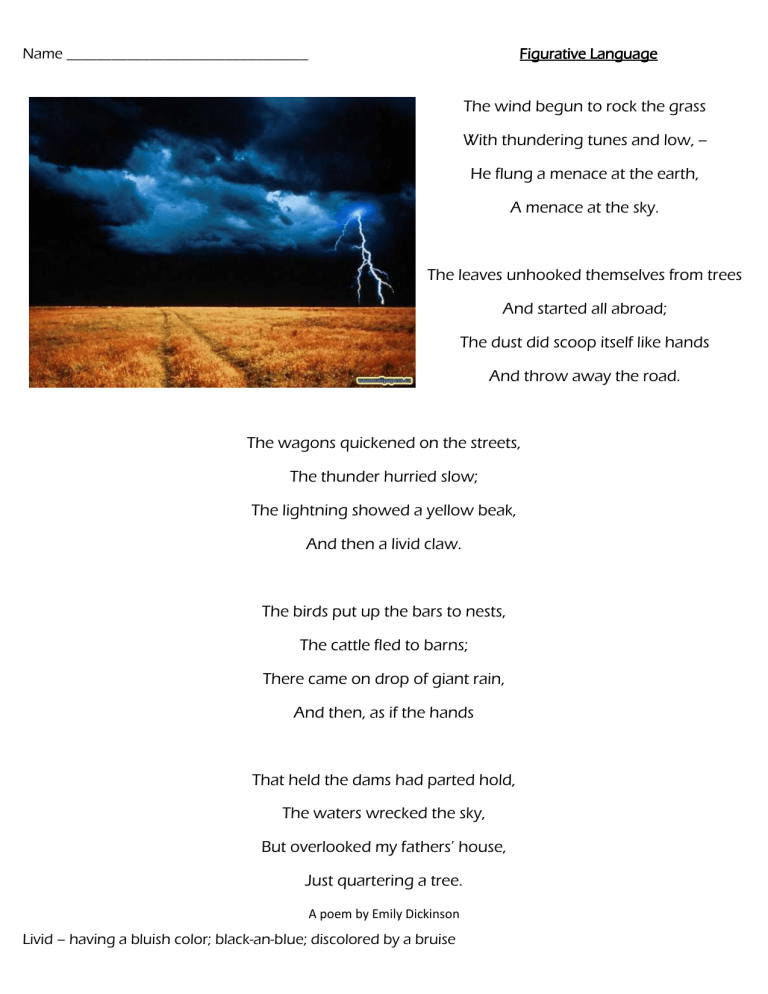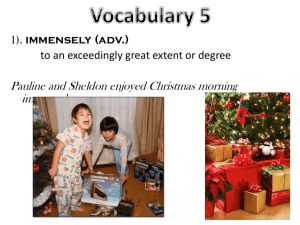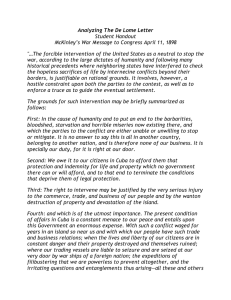TT_5_StormPoem

Name ________________________________ Figurative Language
The wind begun to rock the grass
With thundering tunes and low, --
He flung a menace at the earth,
A menace at the sky.
The leaves unhooked themselves from trees
And started all abroad;
The dust did scoop itself like hands
And throw away the road.
The wagons quickened on the streets,
The thunder hurried slow;
The lightning showed a yellow beak,
And then a livid claw.
The birds put up the bars to nests,
The cattle fled to barns;
There came on drop of giant rain,
And then, as if the hands
That held the dams had parted hold,
The waters wrecked the sky,
But overlooked my fathers’ house,
Just quartering a tree.
A poem by Emily Dickinson
Livid – having a bluish color; black-an-blue; discolored by a bruise
Name ________________________________ Figurative Language
1.
He flung a menace at the earth, a menace at the sky.
Which word is a
synonym
for menace as used in the line above?
A.
throw
B.
reassurance
C.
storm
D.
threat
2.
“The leaves unhooked themselves from trees and started all abroad”
is an example of
A.
Metaphor
B.
Simile
C.
Personification
D.
Imagery
3. The author use imagery throughout the poem to show
A.
her love of nature
B.
that animals know how to protect themselves during thunderstorms
C.
that her childhood home has not been changed
D.
a powerful storm and the effects it had on nature
4. The author uses imagery in the third stanza to help the reader picture
A.
the strength of the wind blowing
B.
the danger of lightning
C.
how people and animals take shelter from the storm
D.
how much rain is falling
5. Which line from the poem is an example of a simile?
A.
“The dust did scoop itself like hands.”
B.
“And then, as if the hands”
C.
“The birds put up the bars to nest”
D.
“That held the dams had parted hold”
6. What is happening during the last stanza of the poem?
_________________________________________________________________________________
_________________________________________________________________________________
Livid – having a bluish color; black-an-blue; discolored by a bruise





